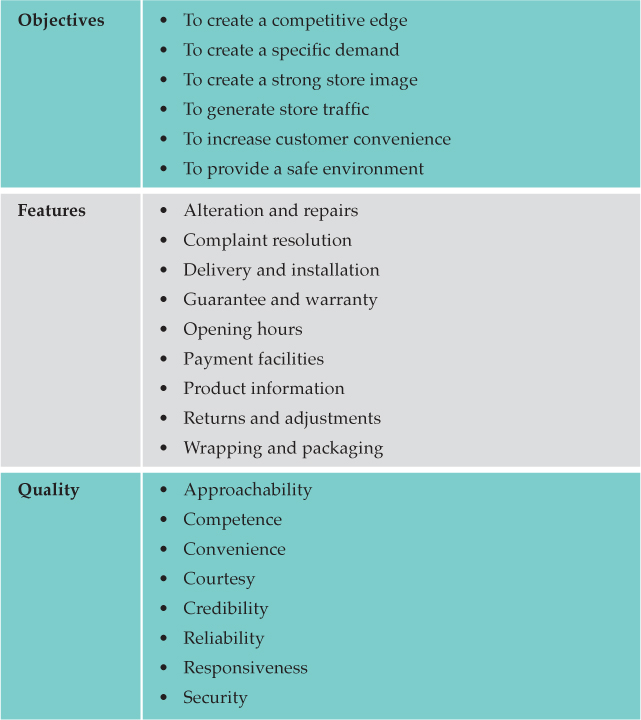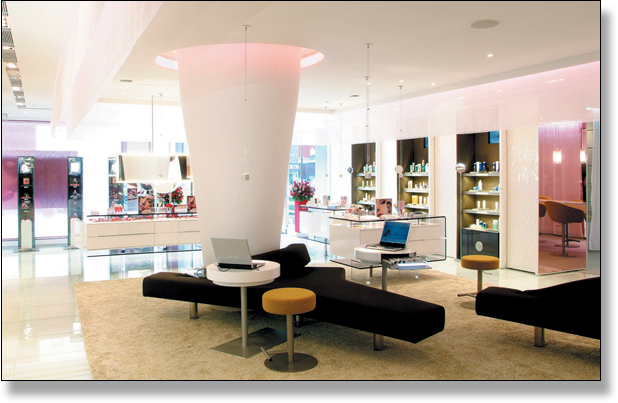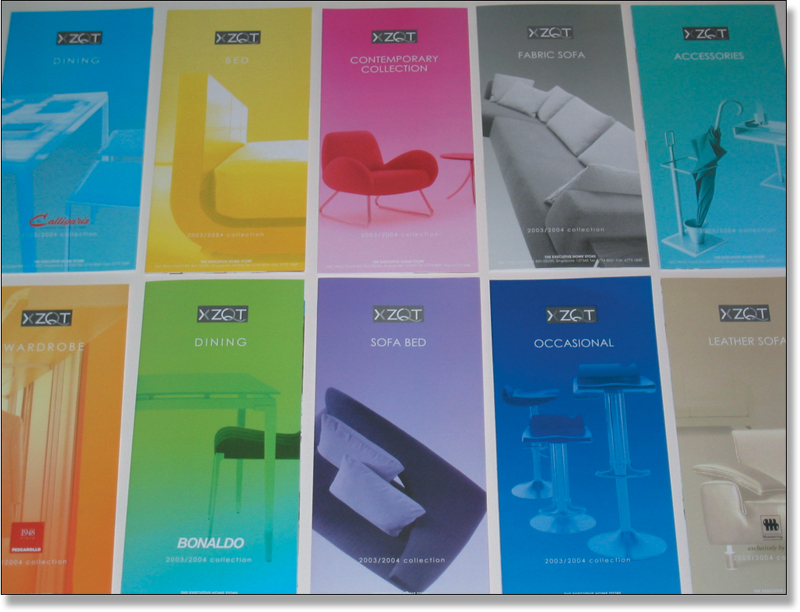Chapter 10. Customer Service Decisions

Customer service is a set of activities that retailers provide to make the shopping experience more rewarding for customers. These activities not only increase the value the customers receive from the merchandise or services, but also generate positive word-of-mouth communication which attracts new customers.
Goods + Services = Price
Customer service, if used strategically, can provide a competitive advantage to the shop and enhance the retail offering. The extent of customer service to which a retailer provides is determined by:
• The retailer’s objectives
• The type of merchandise
• The customers
A Service Strategy
In Chapter 2, we discussed the importance of customer service. We can conclude that customer service is a process of creating and sustaining customer loyalty. The end objective is to increase customer value and, at the same time, reduce the cost of selling.
Better service does not imply more costly service.
In fact, better service will generate savings as processes are streamlined and as the number of complaints, investigations and rework decrease. Thus many retailers are focusing on customer service as their competitive differentiator.
However, creating and sustaining a corporate culture of service excellence is not easy. Service excellence is more than just smiling employees who make eye contact with their customers. Service excellence is about making, enabling and keeping promises with customers.
In order to achieve consistency and deliver promises through excellent people and practices, a service strategy is required.
A service strategy creates a vision of service excellence for the company.
It helps to clarify service standards to the employees, focus their effort in a common direction, provide a guide for decision-making and build a service culture within the company. It also guides the human resource personnel in hiring the right people.
Developing a service strategy requires the effort and involvement of a team of company leaders and employees. While the managers need to have a clear view of the big picture, the commitment of staff is also important in order for any service initiative to be successful.
Services have to be designed to suit the customers and not the employees. A service strategy should help to differentiate the company from its competitors. Start with a service audit to determine what is important to customers when they visit your retail store. Ask them to envision an ideal retail store. Analyse how your store and your competitors measure up to that standard. Specific standards have to be set for each customer service process, for example, a 24-hour turnaround on customer complaints or inquiries.
Once a service strategy is developed, existing policies, procedures and practices must be aligned to support the implementation of the new strategy. To overcome employee scepticism and foster support, visible service symbols such as a service excellence mission statement, service incentives and measurements must be explained and communicated to all levels of employees.
The Planet Traveller: Travel tips
(courtesy of Kingsmen Creatives Ltd)
Equip employees with the skills to deliver service promises through training and meetings.
A successful service strategy does not end upon implementation. It requires constant monitoring and review. These include assessing employee performance against service standards and rewarding service excellence; comparing your company’s financial performance after the implementation of the service strategy; and benchmarking your services against international best practices. Once you are in control of the system, you should introduce ‘service innovation’ where necessary. Service innovation means to update your service standards in response to market trends or enhance your service offerings to make competitors irrelevant.
Customer Service Programme
A good customer service programme should consider:
• The types of service objectives: A clearly defined set of service objectives that guides the retailer’s efforts on service features and actions
• The features of the service: The types of services provided
• The quality of the service: How the service features are performed


Lancome: Waiting area to enhance customer service
(courtesy of Kingsmen Creatives Ltd)
Handling Customers Effectively
Customers have the right to:
• Browse the merchandise at their own pace
• Expect quality and reliability in the merchandise purchased
• Expect accurate and relevant merchandise information to be communicated
• Expect assistance in making a purchase
All sales staff should take note of the following attributes for good customer relations:
• Be courteous
• Be enthusiastic
• Always smile
• Be attentive
• Show concern
• Ask the right questions
• Make an extra effort
• Handle purchases with respect
• Be prepared
• Be well informed
• Be positive in problem solving
• Build customer confidence

Inform your customers of any existing credit card promotions
Handling Inquiries
Customers may make inquiries on a number of issues that may be merchandise-related or service-related. A customer record book can be used to keep track of such inquiries and enable follow-up.
The key points to note are:
• Always answer an inquiry with a smile
• Always be polite
• Stop what you are doing and answer the customers’ queries patiently
• Never reply with statements such as, “I don’t know”, or “It’s all there”.
By answering the customer inquiries in a correct and polite manner, you would have made a good impression on the customer on behalf of the company.
Product Knowledge
Retailers must pick up basic product knowledge to answer customer’s queries. Having up-to-date product knowledge is important to being a successful salesperson as it gives customers confidence in the shop and the assurance that the merchandise is suitable in meeting their needs.
Some basic product knowledge include:
• The uses
• The benefits
• The performance
• The material
• The care
• The appearance
• The background

Brochures on product information
(courtesy of The Executive Home Store – XZQT)
Handling Complaints
All retailers must have standard policies for handling problems. Such policies must be communicated to all employees. If a rectifiable problem is identified, such as a defective product, the retailer should make restitution on the spot and apologise for the inconvenience caused to the customer. The retailer should offer either a replacement, a credit towards future purchase or a cash refund. Minor complaints may be handled by the sales assistants but customers will often appreciate the attention of their superior.
Service Recovery
In cases where the cause of the problem is difficult to identify; is uncorrectable; or is the result of the customer’s unusual request, appropriate steps in effective service recovery may include:
• Listening to the customer
• Providing a fair solution
• Resolving the problem quickly



